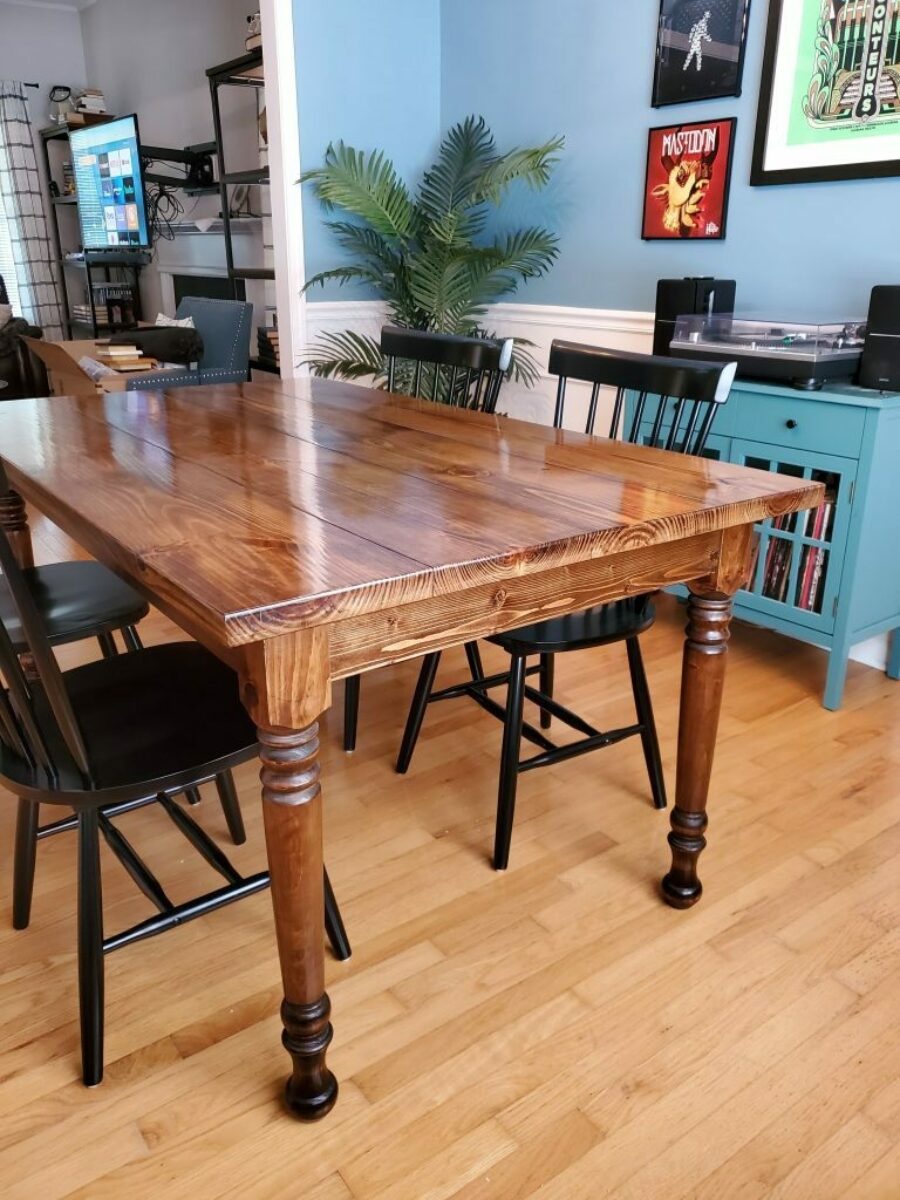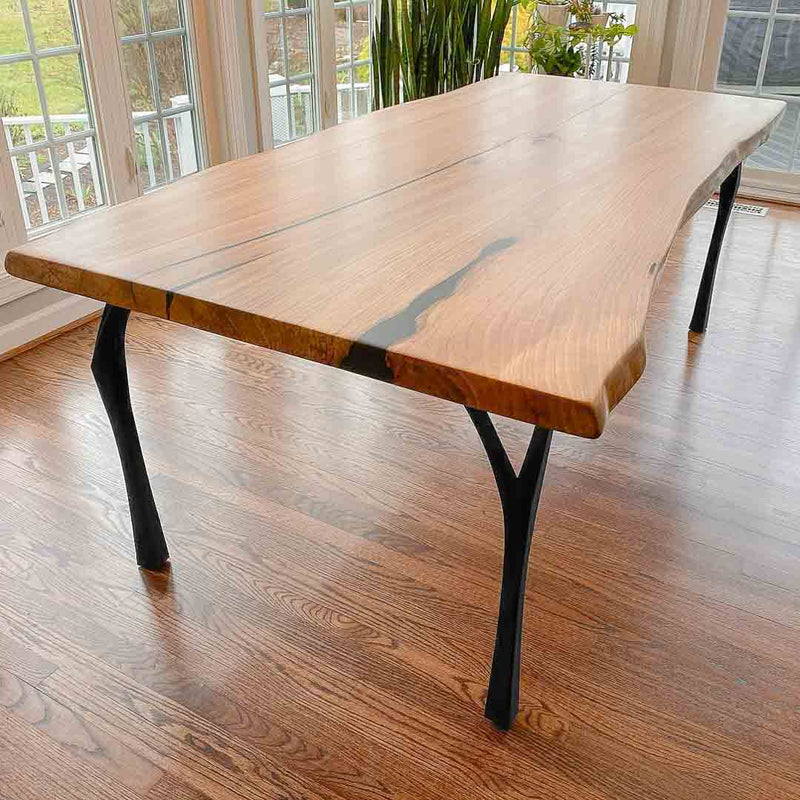Add Charm and Elegance to Your Space with Distinct Dining Room Table Legs
Add Charm and Elegance to Your Space with Distinct Dining Room Table Legs
Blog Article
Expert Tips for Setting Up Dining-room Table Legs for Optimum Stability
When it pertains to setting up eating room table legs, attaining maximum security is paramount for both functionality and aesthetics. The process starts with picking the right materials and hardware, adhered to by precise alignment and factor to consider of weight circulation. Each step plays an essential function in guaranteeing that the ended up product endures day-to-day use without compromising security or layout stability. Recognizing the nuances of these components can significantly influence the total outcome. What certain techniques can improve security even additionally?
Pick the Right Legs
When selecting the suitable legs for your eating area table, it is vital to take into consideration both functionality and aesthetic appeals. The legs you pick will significantly impact the general style and security of the table. Initially, evaluate the table's intended usage; if you expect frequent gatherings, stronger legs, such as those made from solid wood or metal, may be better, as they supply raised sturdiness and assistance.
Following, think about the height and design of the legs in regard to the tabletop. Basic dining tables generally range from 28 to 30 inches in height, so ensure the legs align with this criterion for convenience. The design of the legs ought to complement the design of the tabletop-- whether it be modern-day, rustic, or standard. Conical legs can add a modern touch, while transformed legs might share an extra traditional aesthetic.

Select Appropriate Hardware
Exactly how can the appropriate hardware improve the security and durability of your dining-room table? The choice of ideal hardware is important to guaranteeing that the legs of your table are firmly affixed and able to endure routine usage. Top quality screws, screws, and braces provide the needed toughness to sustain the weight of the table, as well as any type of added lots placed upon it during meals or events.
When choosing screws, select those made from long lasting products such as stainless-steel or brass, which resist corrosion and preserve stability gradually. The size of the screws is just as important; they ought to permeate deeply into the table's structure without jeopardizing stability. For bolted links, take into consideration making use of lock washing machines to prevent loosening due to vibration or activity.
In addition, utilizing corner brackets can include additional support, especially for bigger tables or those with larger tops. These brackets distribute weight equally and aid preserve the table's shape. Ensuring that the equipment you select is appropriate for the specific products of your table will further boost its general stability and long life, enabling you to enjoy your eating experience for many years to come.
Ensure Correct Positioning
Proper placement of dining-room table legs is crucial for both aesthetic appeal and useful stability. Misaligned legs can bring about an unequal tabletop, which might not only be aesthetically unappealing however also endanger the table's usability. To attain optimal placement, begin by gauging the distance from the table's edges to the leg attachment points. This makes certain that each leg is positioned equidistant from the sides, creating a well balanced look.
Utilize a degree over here throughout installation to verify that each leg is vertical to the tabletop. This action is important, as also small inconsistencies can escalate right into substantial stability problems with time. It is recommended to note the wanted leg settings on the bottom of the table with a pencil or masking tape before safeguarding them. This method acts as a visual guide, enabling for adjustments as required.
In addition, double-check the alignment after the initial screws are tightened, as modifications might be needed before completely safeguarding the equipment. By focusing on correct look at this website alignment, you not only improve the table's general layout however likewise make sure that it continues to be functional and stable for many years to come.

Think About Weight Distribution
After guaranteeing appropriate placement of the eating room table legs, it is necessary to consider weight circulation to improve security and capability. dining room table legs. Appropriate weight distribution is critical in stopping tottering and making certain that the table can sustain its desired lots without risk of tipping or falling down
When positioning the legs, guarantee they are put at equal ranges from the center of the table to uniformly disperse the weight across the framework. Think about the weight of the table top and any items that will regularly rest on it, such as tabletop appliances or attractive pieces. Tables with larger surface areas must preferably have legs positioned closer to the edges, as this makes the most of the base of support and lessens the risk of instability.
Furthermore, if the table is planned for usage in a high-traffic area, take into consideration using much heavier products for the legs or including stabilizing aspects, such as cross-bracing or a reduced shelf - dining room table legs. These modifications can help maintain balance and stop shifting during usage. Inevitably, a well-considered weight distribution strategy will substantially enhance the table's overall performance, ensuring it remains a appealing and functional focal point for your eating space
Test Stability Before Usage
Examining the stability of the dining space table prior to usage is an essential step that must not be forgotten. Ensuring that the table is secure and steady can stop crashes and lengthen the life-span of the furnishings. Begin by using mild pressure to different points on the table surface. Push down on the center and after that along the sides, my website changing or observing any kind of wobbling. Identify the legs or joints that may call for change. if the table reveals instability.
Next, examine that all fasteners and screws are tightened effectively. Loosened connections can lead to instability and possible damage over time. If necessary, make use of wood glue on joints to boost stability, guaranteeing to permit sufficient drying out time.

Verdict
To conclude, the installment of dining space table legs calls for careful consideration of products, equipment, weight, and placement distribution to accomplish optimum security. By selecting durable legs and high-grade fasteners, guaranteeing exact placement, and dispersing weight evenly, the structural stability of the table can be substantially boosted. Performing a stability test prior to regular use even more makes sure that the table will certainly hold up against day-to-day stress, therefore providing a trustworthy and risk-free dining experience.
When it comes to installing dining room table legs, achieving maximum stability is paramount for both functionality and aesthetic appeals. The legs you select will substantially affect the general design and stability of the table (dining room table legs). Basic dining tables typically vary from 28 to 30 inches in elevation, so make certain the legs line up with this requirement for comfort.Proper alignment of eating space table legs is vital for both aesthetic appeal and useful security.In final thought, the installation of eating area table legs needs cautious consideration of products, placement, weight, and hardware distribution to attain maximum stability
Report this page